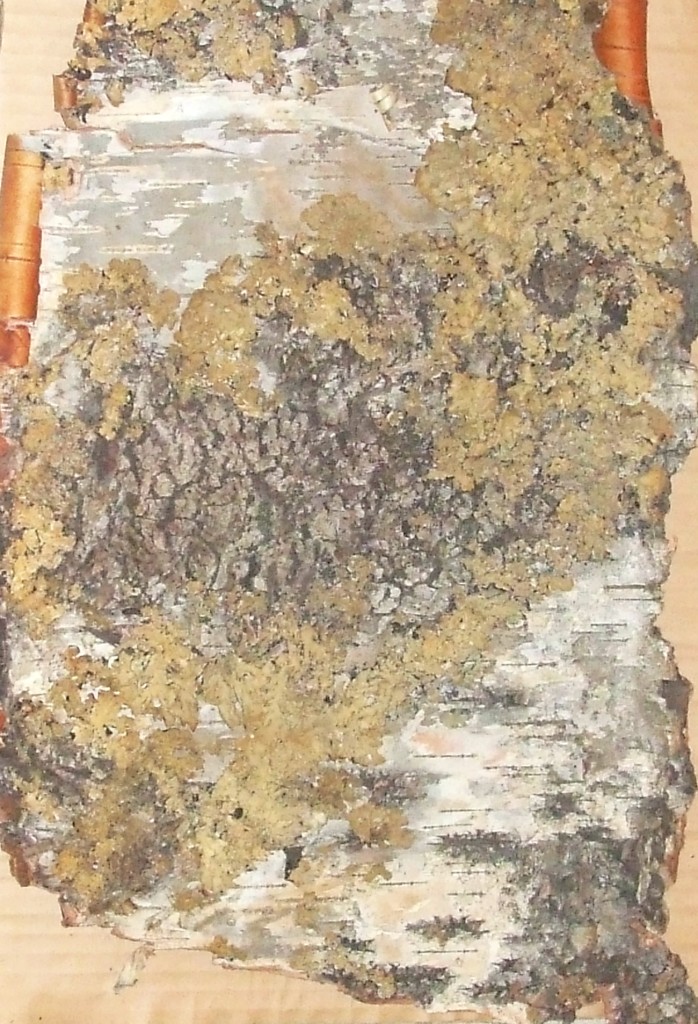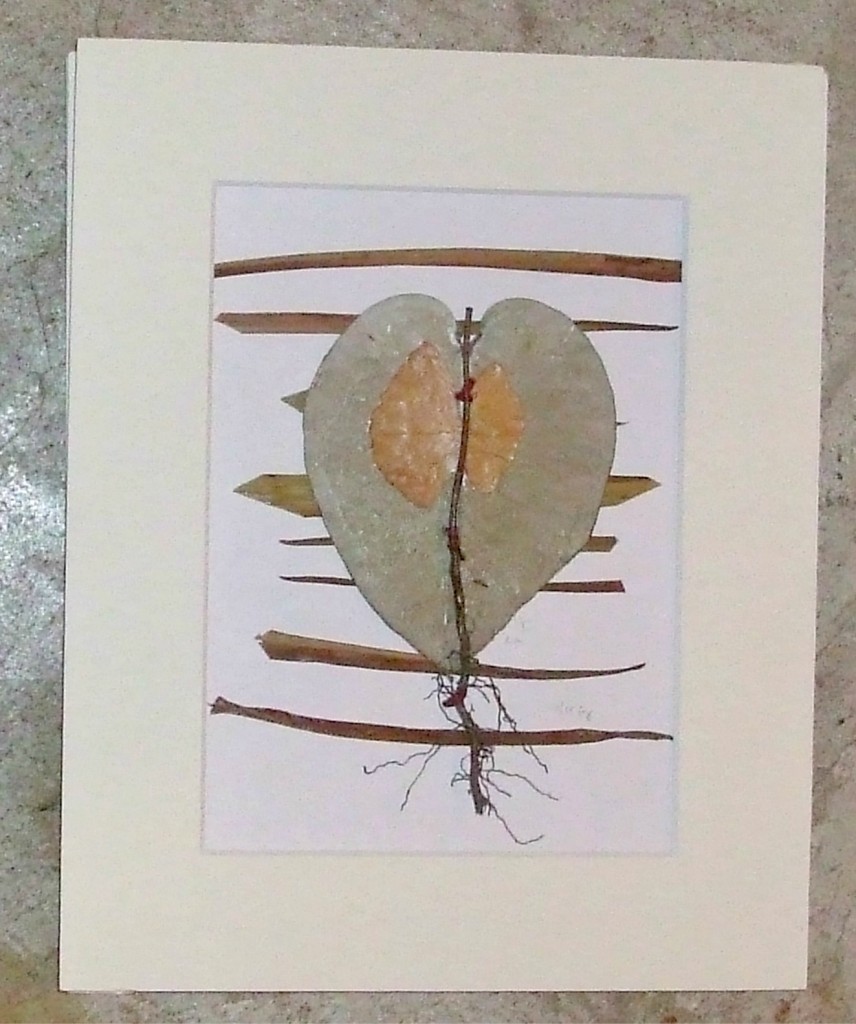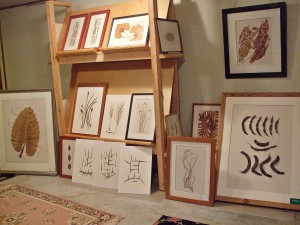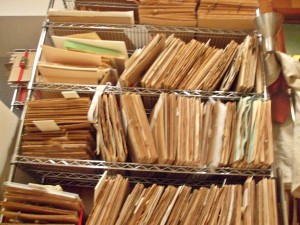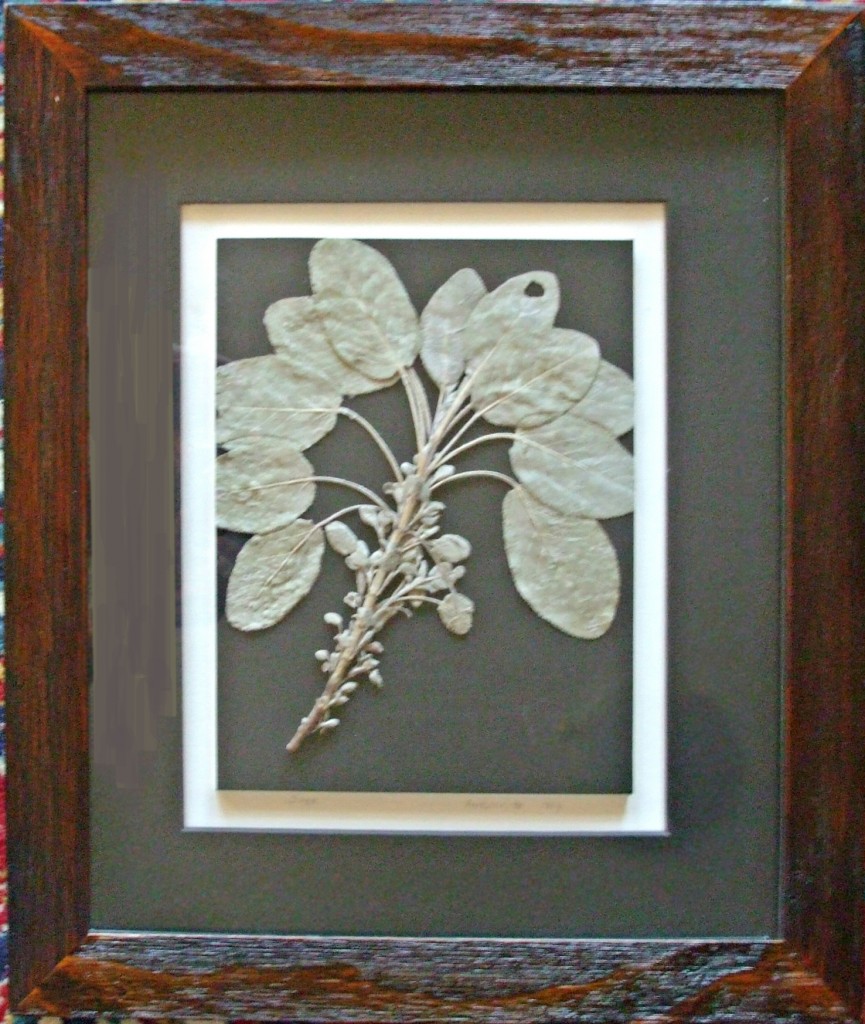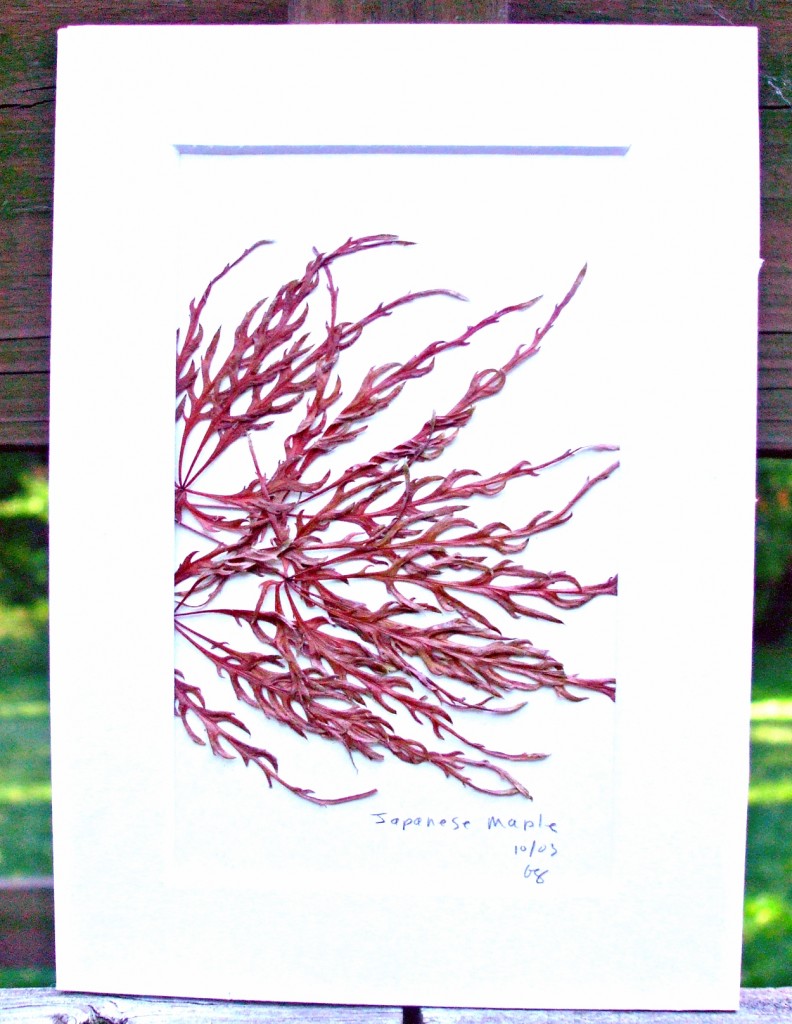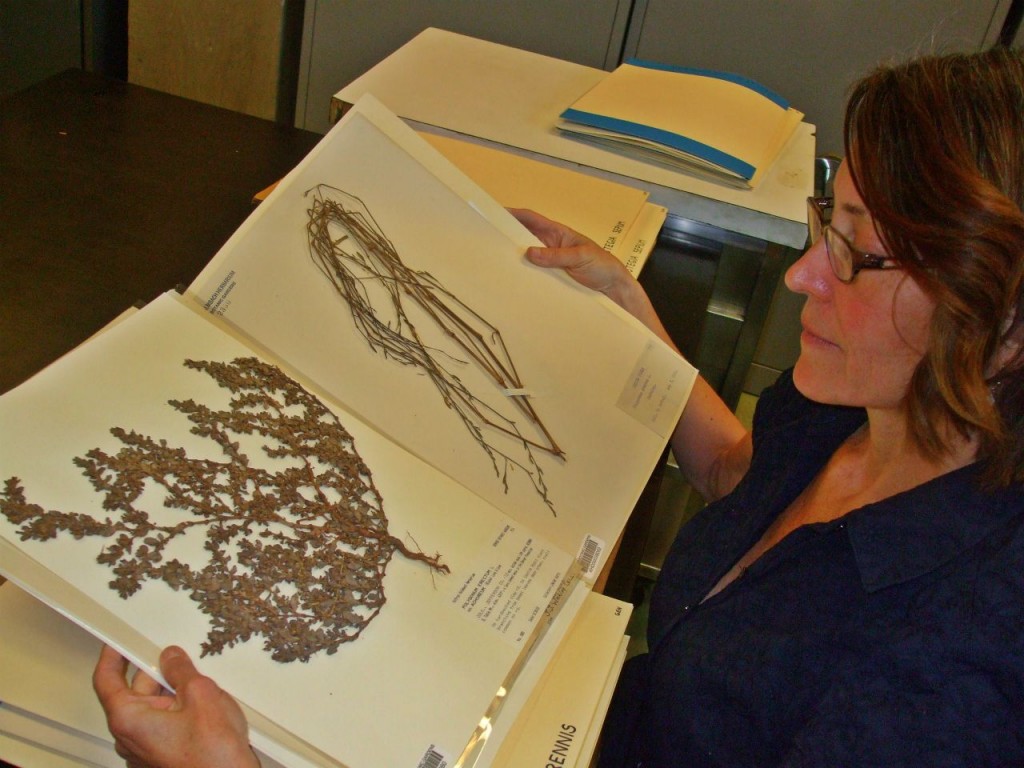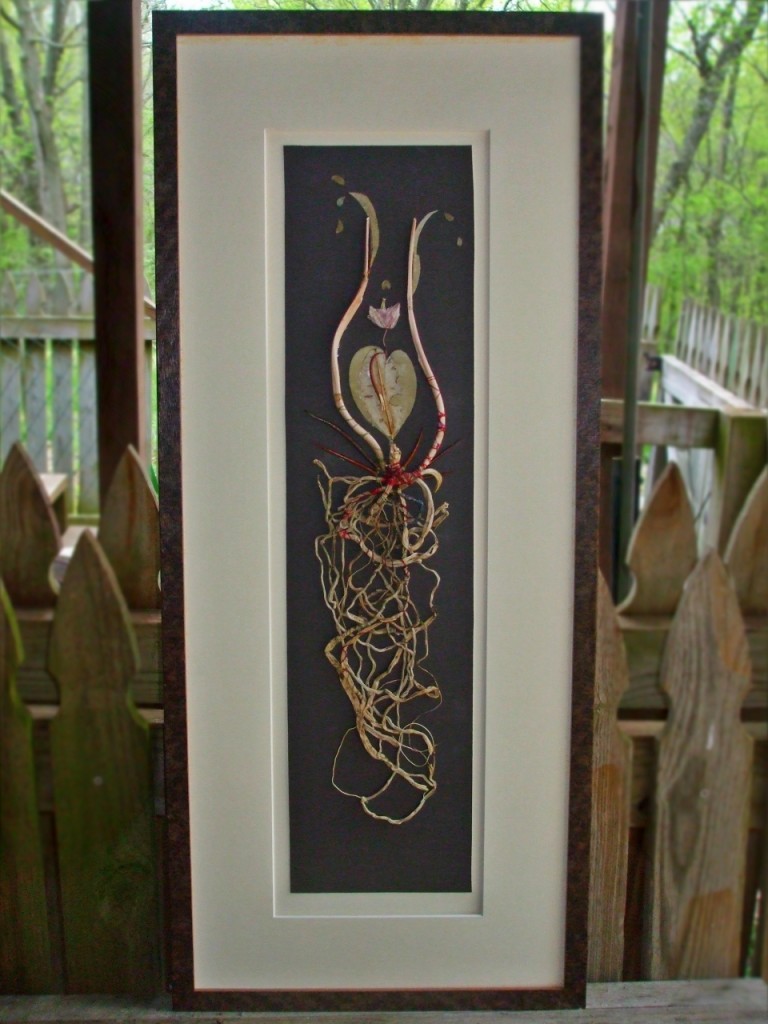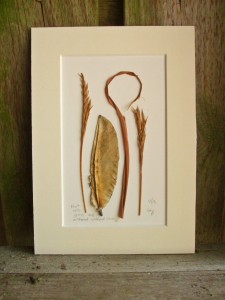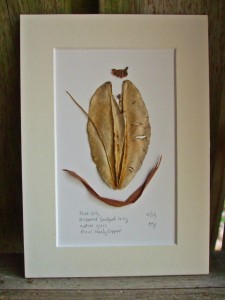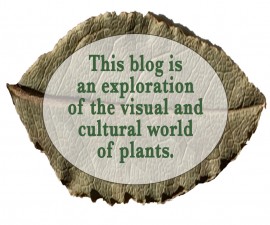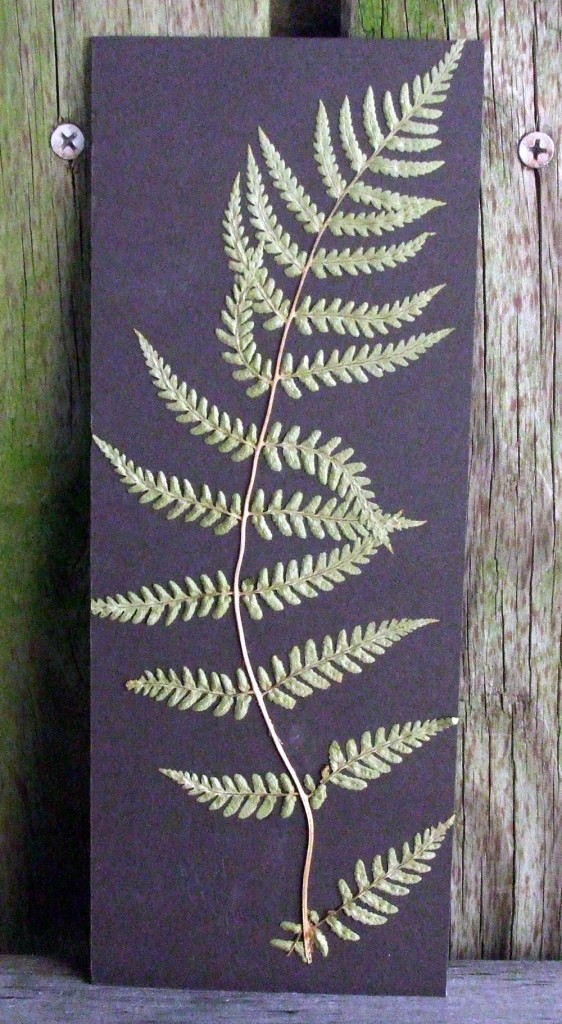This fall I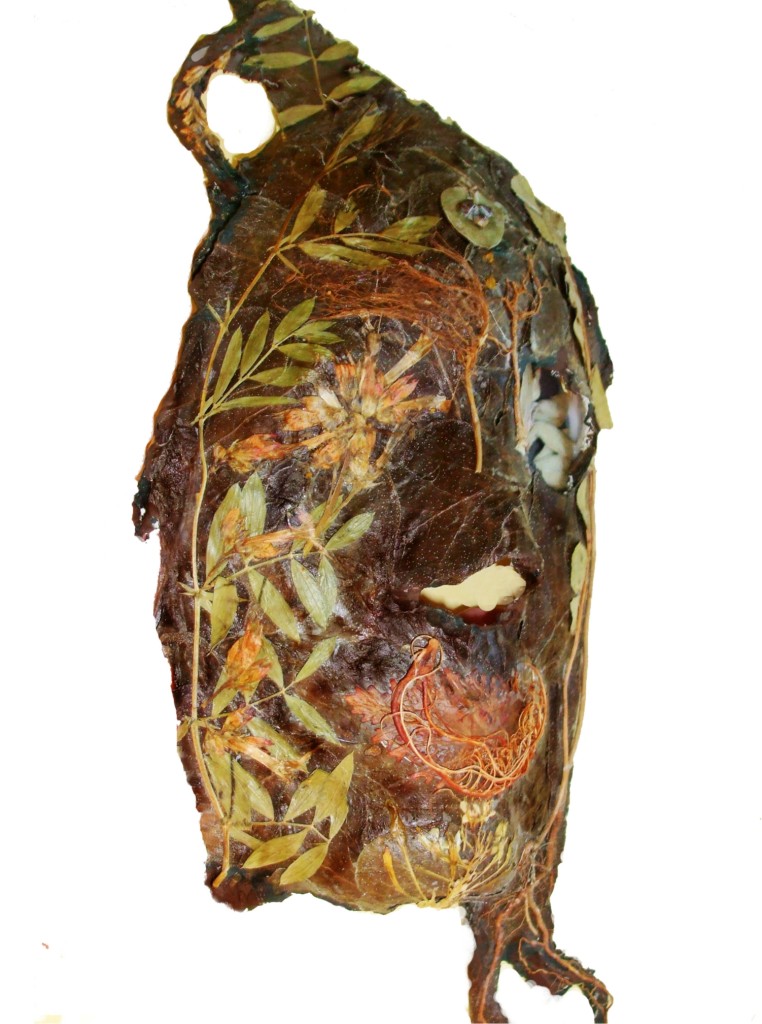 was considering that mounting surfaces created a contextual impact, and wondered what alternatives might be possible .
was considering that mounting surfaces created a contextual impact, and wondered what alternatives might be possible .
I’d experi-mented with fabric, paper and paper over chicken wire, and then I remembered quick dry plaster.
After trying a few masks on myself, I found most leafy material to be a challenge on the curved and uneven surfaces of plaster, while stemy material, like tamarind, worked really well.
I found that using wire to adhere branchy pieces was more reliable than botanical glue and/or a ploymer varnish over leaves (although everything got a top coat of the varnish with a UV filter). 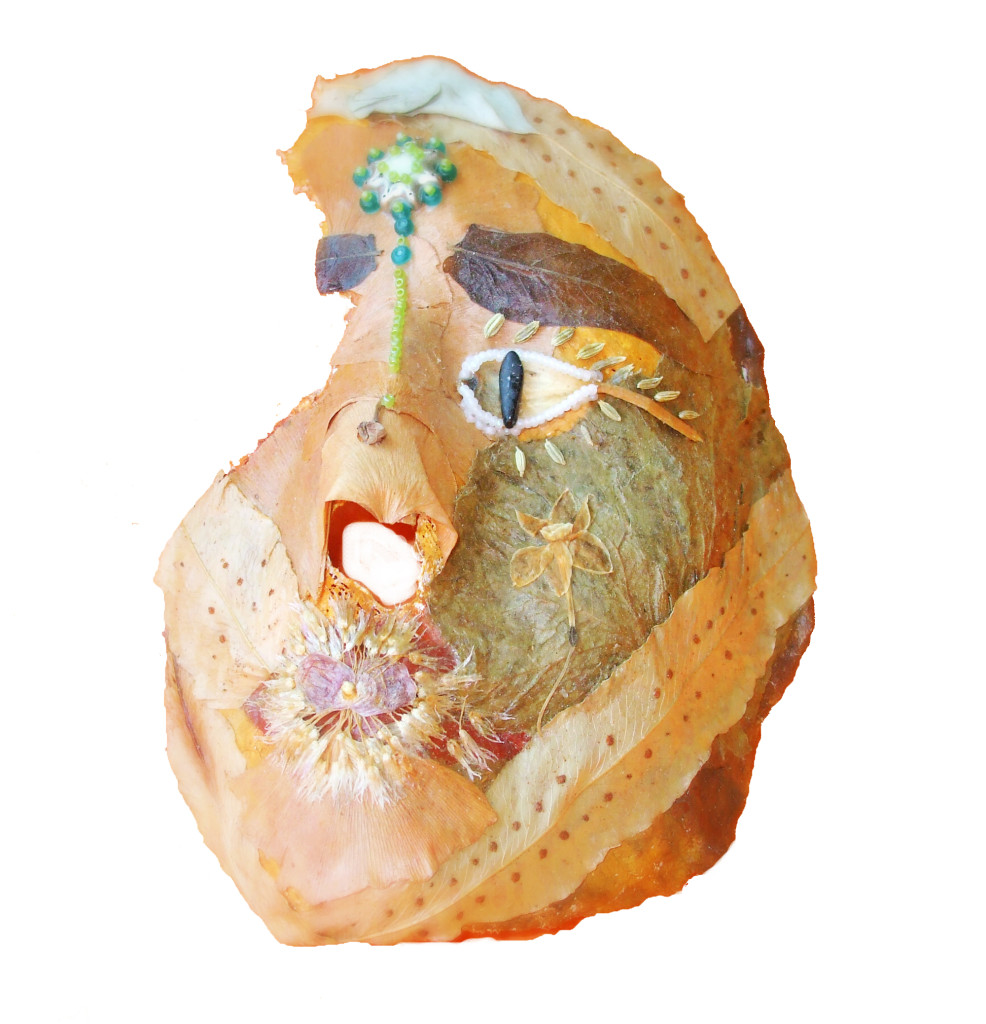
The first one I made (right) I covered in tobacco I picked in Weston, MO, and it applied easily right over the plaster.
Then I added a part of a squash leaf, fennel (and other) seeds, eucalyptus, a plant souvenir from Colorado, fern, and finally, beads.

